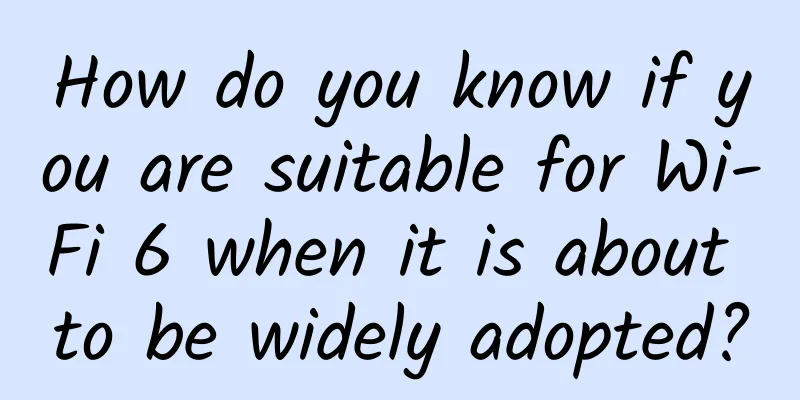How to make the key cut in 5G network slicing?

|
Since the advent of the 5G era, the most mentioned and eye-catching technology is probably network slicing. What is network slicing? In layman's terms, it is to logically divide the operator network and logically isolate resources and services. Different levels of business data can be transmitted on network slices at different logical levels, thereby meeting the differentiated requirements of different business scenarios for network data transmission rate, security, reliability and other aspects. The form of network on-demand service is the key entry point for 5G to empower thousands of industries. I won’t go into details about the benefits of network slicing. So how should network slicing be applied, and how do end users use this invisible and intangible network slicing service? 4G transmission big pot meal Let's start with how users use data services in a mobile network environment: As we all know, if end users want to use data services through the operator's network, they must meet the following conditions: 1. You need a terminal device, such as a smartphone; 2. The phone is installed with apps, such as games and video applications; 3. The phone is within the service area of the operator that the phone belongs to. In a 4G network environment, for terminal devices equipped with the Android operating system, the operating system will establish a default data bearer when the device is turned on. When a user wants to use an APP, such as playing online games or watching videos in a carrier network environment, the application data will be sent to the carrier network side through this default bearer. For most Android devices, application data is transmitted through this default bearer, and the application data runs on the same network. On-demand services in the 5G era In the 5G era, the introduction of network slicing means that different app data in mobile phones can run on different logical networks divided by operators through different data bearers, so as to realize flexible and dynamic allocation of network resources for different business needs, thereby optimizing connections, reducing costs and improving efficiency. So, what are the conditions required to achieve this? First, the operator network needs to support network slicing technology, which requires the operator to deploy 5G SA network. Secondly, the app itself or the operating system needs to know which network slice the data of this app should run on. Here we need to briefly introduce how the 3GPP standard regulates the relationship between apps and network slices. A URSP (user terminal routing selection policy) rule is defined in the 3GPP 5G protocol. This rule describes the correspondence between apps and network slices. The terminal operating system needs to select a network slice for the app according to the URSP rule. There are two important groups of parameters in the URSP rule. One group is the Traffic Descriptor parameter that describes the app attributes, including AppId, DNN (data network name), IP Descriptor (IP triplet), Domain Descriptor (domain name descriptor), Connection Capabilities and other parameters. The other group is the Route Selection Descriptor that describes the data bearer attributes, including S-NSSAI (network slicing), SSC Mode (session and service continuity mode), DNN and other parameters. URSP rules are actually the correspondence between multiple groups of Traffic Descriptors and Route Selection Descriptors. Once the terminal device knows the Traffic Descriptor parameters related to the app, it can naturally find the Route Selection Descriptor related to the data bearer according to the URSP rules, which contains the network slice information, so it is clear which network slice the app should access. Solve the last mile of landing However, existing operating systems and terminal devices do not support selecting network slices for apps through URSP rules. When the operator's SA network is deployed and ready for commercial use, this problem becomes the biggest obstacle for network slicing to truly provide services to end users. To this end, Unisoc proposed a network slice selection solution based on the Android operating system. The URSP rules are sent from the network to the terminal device. What the terminal device needs to complete is the selection of the app and the network slice and the establishment of the bearer. As mentioned above, in order to complete the selection of the network slice, it is necessary to pass the Traffic Descriptor parameters related to the app, so where do the Traffic Descriptor parameters come from? The most ideal source is that the app passes it to the operating system when requesting data bearer, but there are two major problems here. First, although the Android operating system provides an interface for the application to apply for data bearer, there is no interface for passing Traffic Descriptor parameters. Second, as mentioned above, in the Android application market, most apps will not request data bearer from the operating system, and application data is sent and received through the default data bearer. To address the first difficulty, Unisoc independently developed an interface for the app to pass all Traffic Descriptor parameters to the operating system, which can ensure that operators' URSP rules are not restricted by the terminal operating system and can be flexibly formulated, modified and updated, completely decoupling this part of the operator from the operating system. For the second biggest difficulty, Unisoc and China Unicom innovatively proposed to apply for data bearer for apps through third-party modules to match network slices. In this way, for app developers, the interaction with the operating system is no different from before. Not only can it ensure that incremental apps can quickly match the operator's network slices, but also a large number of existing apps can enjoy network slicing services. It can be said that Unisoc's network slicing solution is based on the perspective of app developers. It not only solves the problem of app and operating system coupling caused by URSP rules, but also reduces the time cost of app developers to update apps. It is also worth emphasizing that in order to avoid being affected by the operating system, URSP rule matching is processed on the modem side. This is conducive to the upgrade and evolution of the operating system on the one hand, and greatly simplifies the development cycle of 5GCPE and 5G general modules when introducing network slicing solutions on the other hand, and supports other operating systems such as Linux. At present, 5G smartphones and 5G CPE equipped with Unisoc chips have completed technical verification on Beijing Unicom's 5G SA trial commercial network. After technical discussions and difficult problems, Unisoc and China Unicom have completely connected apps with network slices, which is a "milestone" event in the commercialization of 5G SA. As a leading chip design company in China, Unisoc has joined hands with partners to open up the end-to-end business flow of 5G network slices, which will vigorously promote the digital transformation of thousands of industries enabled by 5G. |
>>: What benefits will 5G technology bring to smart fire protection construction?
Recommend
Why 5G and IoT security is more important than ever
[[421462]] The convergence of IoT and 5G is a gam...
5G is integrated into thousands of industries, and mature commercial use still needs to achieve the following points
In recent years, 5G is undoubtedly the most popul...
Why does the HTTP request return 304?
[[402402]] I believe most web developers are fami...
GSA: Global 5G user numbers doubled in Q2, LTE market to decline from 2023
Nearly 800 million of these LTE subscriptions wer...
Can lightweighting become the spark that sets 5G off?
At the 31st PT Expo held recently, 5G became the ...
VXLAN L3 applies EVPN to present a complete overlay network
Preface VXLAN (Virtual eXtensible LAN) is an over...
VirMach: $1.15/month KVM-512MB/15GB/1TB/multiple data centers available
VirMach released several special packages on Blac...
[Black Friday] TNAHosting: $9/year KVM-1GB/15G SSD/5TB/Chicago Data Center
TNAHosting's Black Friday promotion includes ...
South Korean government’s request for 5G fee reduction was rejected: How difficult is 5G construction?
Increasing speed and reducing fees is Premier Li&...
LoRa and 5G: Can they be used for IoT network connectivity at the same time?
There is no doubt that 5G is the new technology o...
Will 5G replace NB-IoT immediately after commercialization? Not really!
From May 21 to May 25, the international telecomm...
[Black Friday] RAKsmart: San Jose servers start at $30/month, Los Angeles servers start at $60/month, Japan servers start at $99/month
November is a busy month. The Double 11 promotion...
5G, edge computing and the Industrial Internet of Things
The new 5G network will transform many industries...
Aruba Launches ArubaESP, the Industry’s First Cloud-Native Platform for the Intelligent Edge
Aruba, a Hewlett Packard Enterprise company, today...
Afen teaches you to avoid the pitfalls of installing RabbitMQ (command practice)
This article is reprinted from the WeChat public ...









